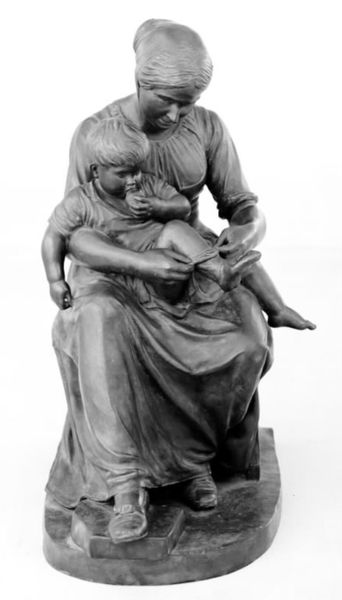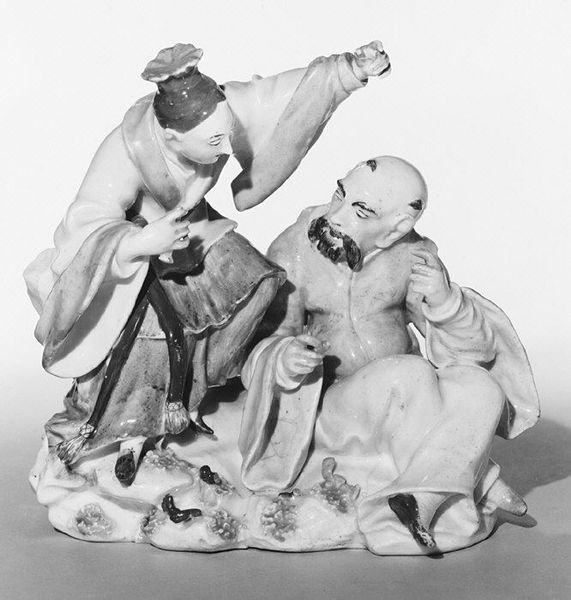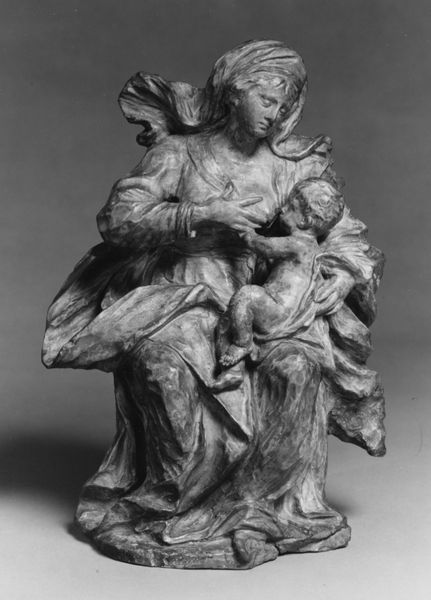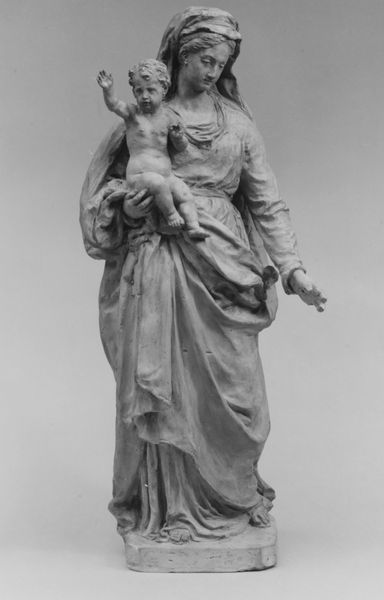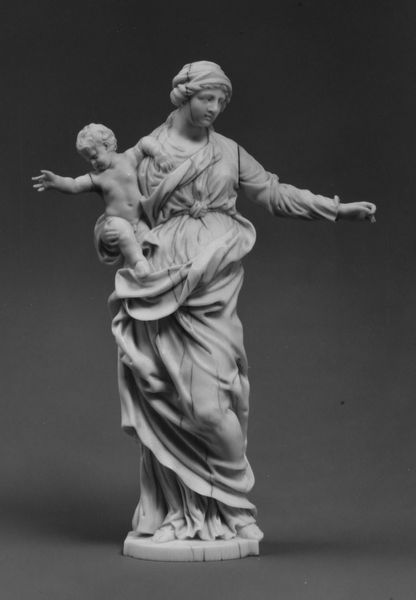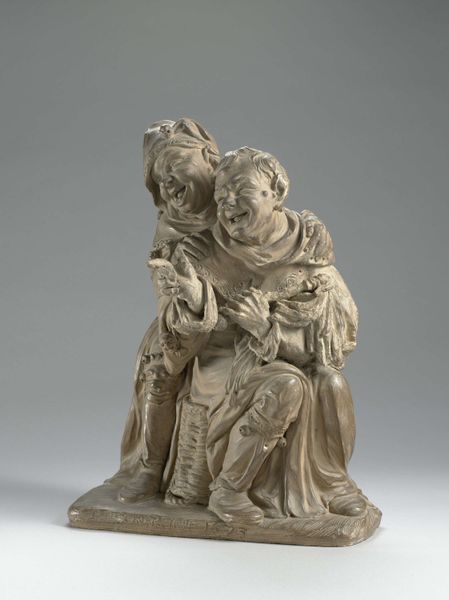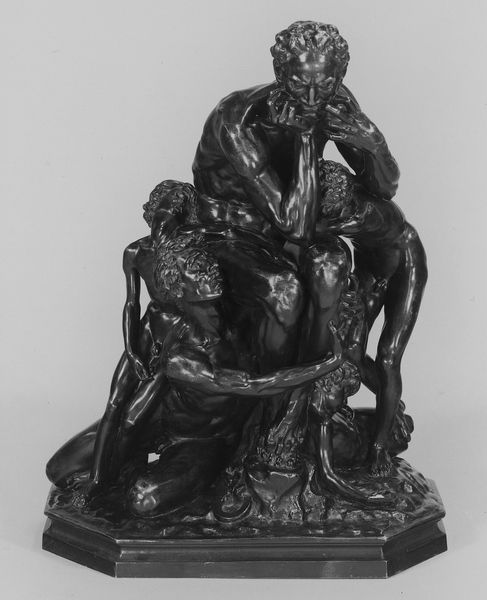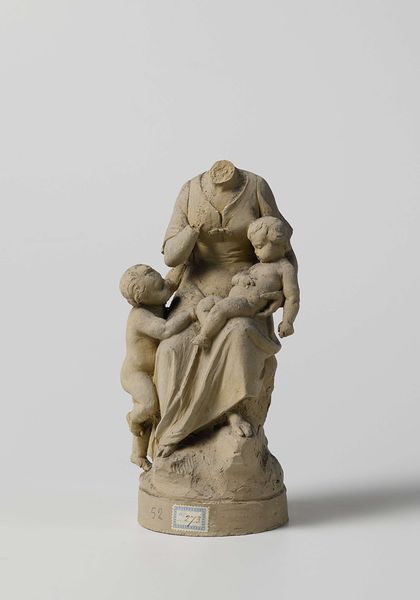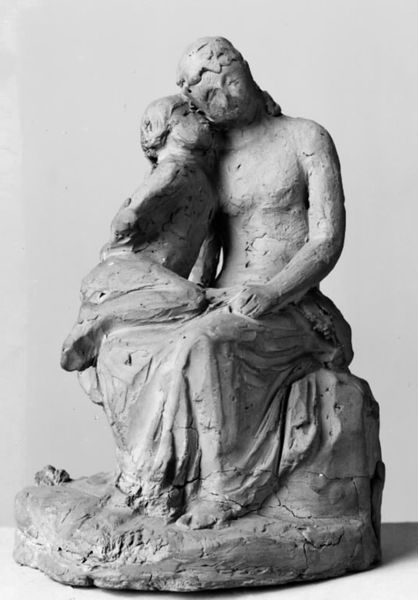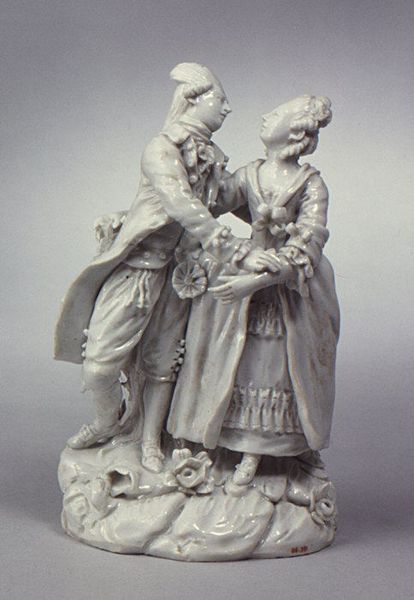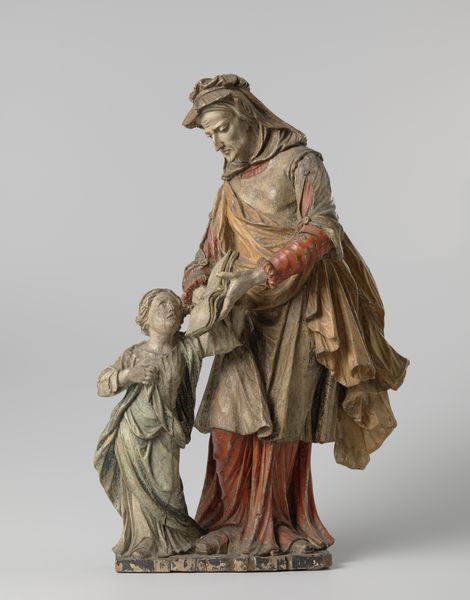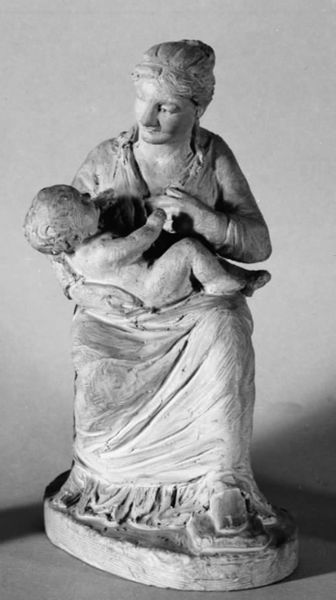
sculpture, marble
#
portrait
#
baroque
#
sculpture
#
classical-realism
#
figuration
#
sculpture
#
group-portraits
#
black and white
#
marble
#
miniature
Dimensions: 42.9 × 44.5 × 27.9 cm (16 7/8 × 17 1/2 × 11 in.)
Copyright: Public Domain
Curator: Here we have "The Holy Family," a miniature marble sculpture by Giuseppe Mazza, dating back to around 1690. It currently resides here at The Art Institute of Chicago. Editor: It has a lovely intimate scale and despite the heavy medium there’s a tenderness to the subject – Mary with the infant Christ. What strikes me is the dramatic chiaroscuro achieved purely through sculpting, as we see it. Curator: Indeed. Mazza masterfully uses light and shadow. The cascading drapery, see how it falls, frames the figures and adds a sense of dynamic movement to what could have been a static tableau. Editor: Yes, but how does that style translate into the function it played at that moment? Such group portraits served specific patrons and often mirrored larger power structures, not always the best expression of pious sentiment. How does this piece function in that landscape of power and representation? Curator: Functionality can be viewed, though, through the lens of reception. The serpentine lines, the contrasting textures… they generate a sensory experience beyond pure representation. Its artistic structure contributes to a particular emotionality. It’s designed to evoke empathy through form. Editor: That may be. And perhaps my concerns stem from later historical views on depictions of divinity and power. Yet this artistic portrayal certainly partakes in existing social contracts about visibility, privilege, and divine right. The history of art, in general, seems to follow certain ideologies. Curator: That's undeniable. However, look closer at the composition itself. The interplay between the smooth, polished skin of the figures and the rougher texture of the base creates a visual dialogue. Each texture is defined through contrast. It provides visual structure that emphasizes the tactile quality, a clear focalization. Editor: And now, thanks to you, I view it in a new light, as much more than a symbol, that it embodies a series of structured decisions, all while playing its role in societal displays of power. The visual structure truly enhances our emotional connection with the artwork. Curator: Precisely! Examining artistic qualities and cultural contexts of the Holy Family yields an engaging conversation, and now even an enlightening experience.
Comments
No comments
Be the first to comment and join the conversation on the ultimate creative platform.
